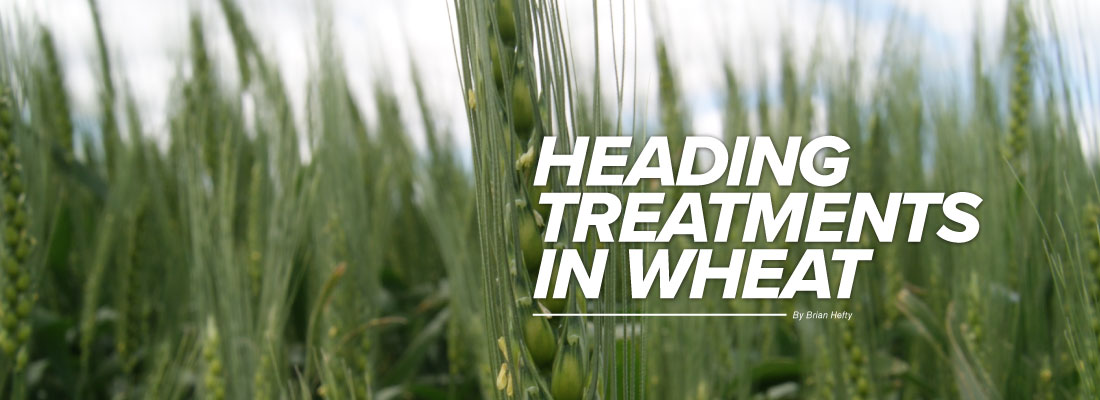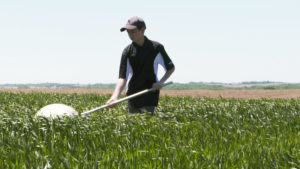
Can you increase your profitability at heading by applying a fungicide, insecticide, nitrogen, and a natural product?
Here’s what you need to know about each decision…
FUNGICIDE
A fungicide will almost certainly pay for you at heading. I can tell you that with certainty because your cost could be as little as $2. Back in 2005, when crop prices were in the tank far worse than today, Folicur cost $11 per acre, and it was your only option for rust and fusarium head blight (head scab) in wheat at heading. Now, the generic version of Folicur only costs $2, and it is still great on almost all types of rust. Plus, it does offer suppression on head scab. If you want
better scab protection, we recommend going to either Prosaro or Caramba. The good news there is BASF lowered the Caramba price this year, so that’s now down to $8 to $10 per acre. Prosaro could get down to under $7 per acre net for the full rate if you are participating heavily in the Bayer Plus program.
There is also a newer option from Syngenta called Miravis Ace, although that runs close to $16 per acre. A key thing to mention with fungicides at heading is to never use a strobilurin product. We see higher levels of DON (deoxynivalenol) when strobs are used at heading, and the last thing you want is vomitoxin in wheat late in the season. Regardless of the product you choose, our advice is to spray just as flowering is starting. Don’t be late or your control will likely drop. Also, we’ve had pretty good luck with twin fan spray nozzles, so you can do a better job covering the head. Our advice is to check out the free Ag PhD Spray Tips Guide app on your smartphone or tablet. The recommendation for this spray timing with fungicide is the GuardianAir Twin (GAT) nozzle.
INSECTICIDE

A sweep net is an invaluable insect scouting tool in any crop.
It’s as simple as this. Before you spray anything, anytime in your wheat, scout for insects. Use a sweep net or even your baseball cap. Sweep back and forth through the wheat. If you are finding a lot of harmful insects, it only costs about $2 per acre to add a cheap pyrethroid like Mustang Maxx or Lamda-Cy. If you want, you can invest a couple more dollars and go to Lorsban for a slightly faster kill, especially if you have a lot of aphids. With all insecticides, pay attention to the Pre-Harvest Interval (PHI). With Mustang Maxx , for example, it’s 14 days in wheat. With Lorsban Advanced, it’s 28 days.
NITROGEN
If your year looks phenomenal, and you’re pretty sure you will hit or exceed your yield goal, a late application of nitrogen may be necessary to keep your protein level up. The key to high protein is having ample, available nitrogen late in the growing season. There are a lot of other minor factors, but nitrogen is about 90% of it. Personally, I’d rather streambar more N before flag leaf, but there are many farmers who spray up to 10 gallons of 28% nitrogen with 10 gallons of water around heading timing. I always get concerned about leaf burn, especially if anything else is added to the tank.
NATURALS
Some people call these biologicals, but whether we’re talking beneficial bacteria, fungi, or plant growth hormones, I call all of these Natural products, since they do exist somewhere in nature. We are just taking them to our crop fields and hoping for yield gain when using them appropriately. In terms of seed treatment and early-season applications, there are lots of Naturals that could work very well on your farm in wheat. At heading, there isn’t anything proven we would recommend, but what we’ve been experimenting with for a couple of years is N-Hydro. This features 4 beneficial bacteria that can fix nitrogen in plants. If you want a late-season N boost with a Natural product, we would encourage you to try a few acres of N-Hydro. If the product continues to work like we’ve seen the last couple of years, it could be a standard recommendation of ours in the future.
